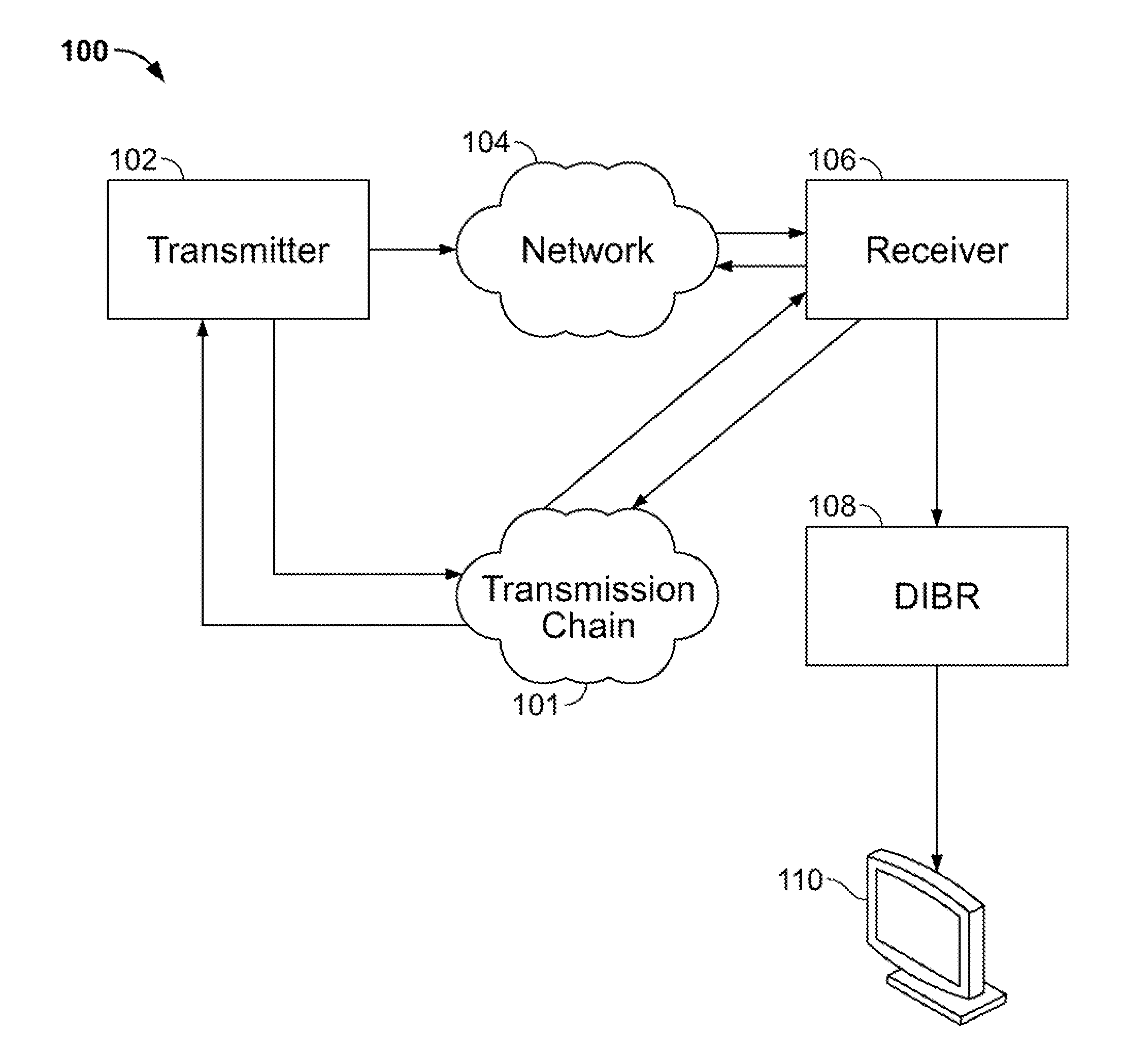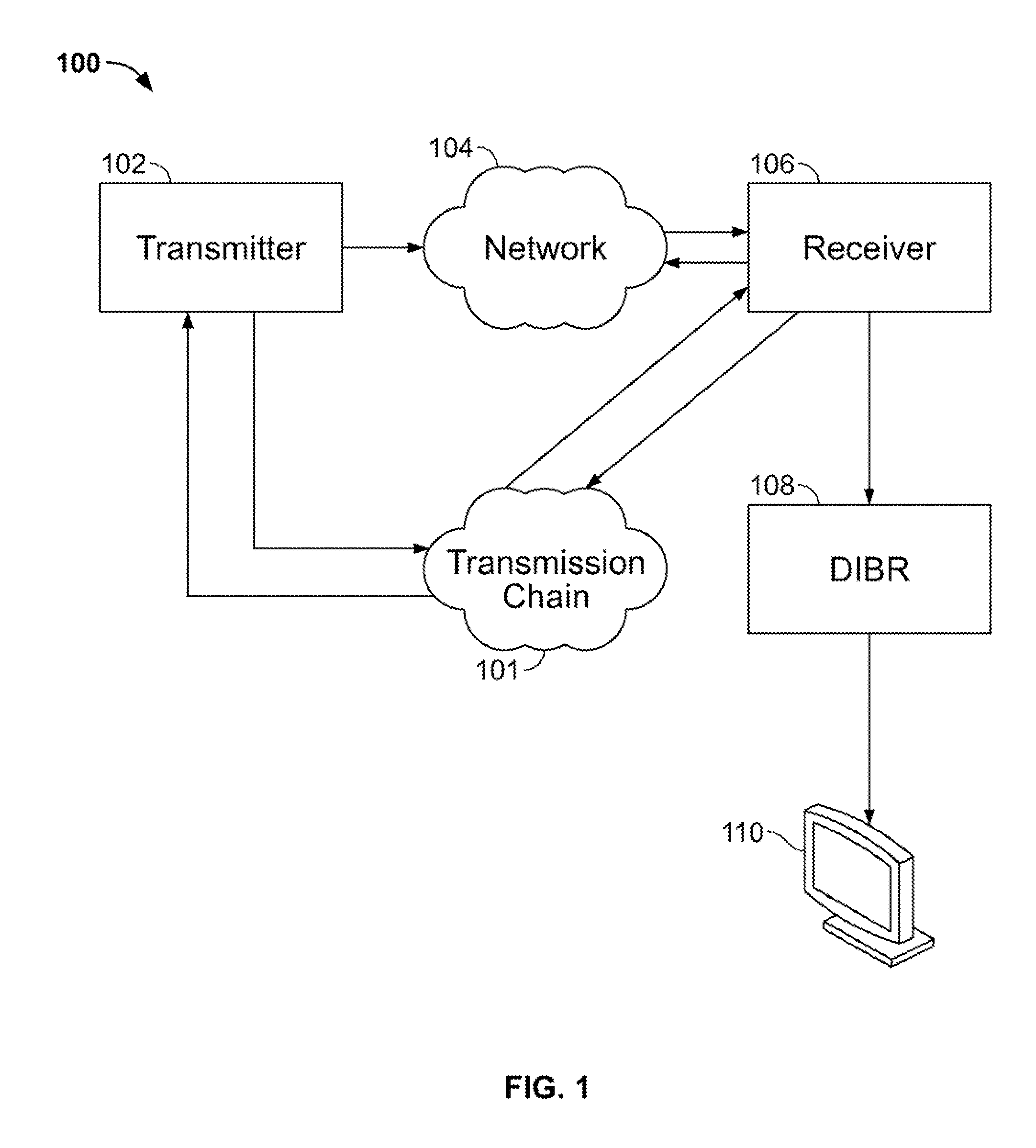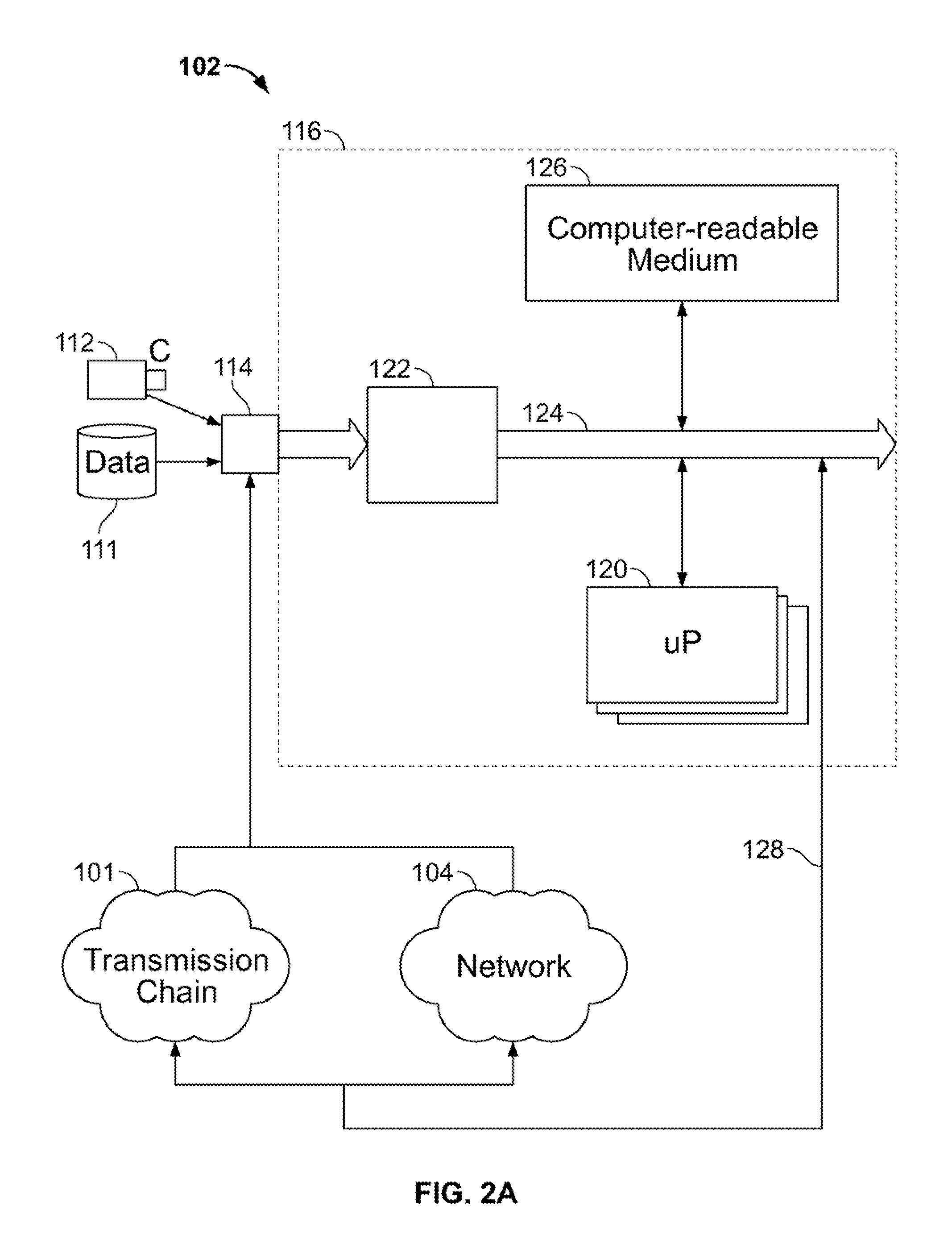System and method for transmission, processing, and rendering of stereoscopic and multi-view images
a multi-view image and transmission system technology, applied in the field of digital image processing systems, can solve the problems of significant cost, significant resolution degradation of prior art methods, and unviewable packed frames of older 2d televisions, and achieve the effect of reducing bandwidth and reducing bandwidth
- Summary
- Abstract
- Description
- Claims
- Application Information
AI Technical Summary
Benefits of technology
Problems solved by technology
Method used
Image
Examples
Embodiment Construction
[0039]The present invention relates to a computer implemented image processing method and system for transmitting and receiving three-dimensional (3D) images. FIG. 1 depicts a block diagram of an exemplary 3D digital processing system 100, according to an embodiment of the present invention. The system 100 includes a computer-implemented receiver 102, a computer implemented transmitter 104, an optional depth-image-based rendering (DIBR) module 108 to be described hereinbelow, and an optional display 110. The system 100 does not include but employs a network 104 communicatively connected to the transmitter 102 and the receiver 104. The transmitter 102 receives 3D stereoscopic image data comprising color data (e.g., RGB, YUV, etc.) from a transmission chain 101 or generates the 3D stereoscopic image data within the transmitter 102. The transmitter 102 reduces bandwidth depth information (i.e., the Z channel) of the 3D stereoscopic image data at low or no incremental bandwidth cost, wi...
PUM
 Login to View More
Login to View More Abstract
Description
Claims
Application Information
 Login to View More
Login to View More - R&D
- Intellectual Property
- Life Sciences
- Materials
- Tech Scout
- Unparalleled Data Quality
- Higher Quality Content
- 60% Fewer Hallucinations
Browse by: Latest US Patents, China's latest patents, Technical Efficacy Thesaurus, Application Domain, Technology Topic, Popular Technical Reports.
© 2025 PatSnap. All rights reserved.Legal|Privacy policy|Modern Slavery Act Transparency Statement|Sitemap|About US| Contact US: help@patsnap.com



